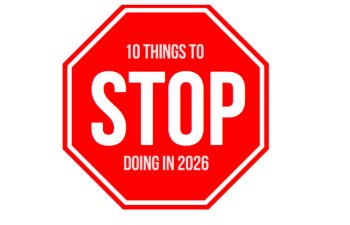Pesticides Are Slipping Through the Regs In the California Cannabis Market
For two decades, California cannabis pioneers operated under the Prop 215 Cannabis law, which allowed doctors to write cannabis prescriptions for a predetermined list of physical and mental ailments. Under this law, anyone could be considered a caregiver and could grow, extract, and produce cannabis products for their registered patients. This was a system that many cannabis users and industry participants regarded as reasonable, and many small mom-and-pop cannabis businesses could make ends meet by selling the products they grew and produced to a variety of patients and dispensaries.
Prop 215’s Unregulated Practices
In 2016, many of Prop 215’s practices came into question because it was completely unregulated. There were no requirements for products to be tested for purity, potency, or even common contaminants like pesticides and mold. Many edibles were being tested and found to have way more or less THC than advertised, leading to uncertainty among consumers. Furthermore, many of the products being legally grown and produced in California were being illegally sold to other states around the US, making California the epicenter of cannabis production and consumption in America. To remedy the issues with Prop 215, California enacted Prop 64 with one major goal in mind: regulating California’s black market and generating abundant revenue for the state through overly taxing the cannabis plant.
Prop 64’s Failed Shift to Adult Use Cannabis
Proposition 64, also known as the Adult Use of Marijuana Act, is a California law passed in 2016 that legalized the recreational use of cannabis for adults aged 21 and over. On paper, this seemed like a revolutionary change, shifting from a system where only registered patients could obtain cannabis to one where anyone over the age of 21 can reliably purchase cannabis. Unfortunately, in the process of developing the legal framework for the Prop 64 system, a bevy of conceptual errors, mistakes, and oversights were made by the legislators creating these laws.
The barrier to entry was so high for legacy cannabis producers looking to legalize their operation under Prop 64 that the majority of California’s cannabis pioneers were unable to participate. On the consumer level, tax rates soared as high as 39.5%, which many consumers regard as unreasonable. So now, California is plagued by a split between two main industries: the traditional market that sells untested and unregulated cannabis with zero tax, and the adult use market that sells regulated cannabis at ridiculously high tax rates, under the false guise of “clean and consumer-friendly cannabis.”
Why Are There Pesticides in California’s Legal Cannabis?
There are two simple reasons for why pesticides are being found in California’s legal weed. The first and most important reason can be reduced to greedy and profit-driven business practices conducted by many large-scale cannabis operators. These operators are already taxed and regulated half to death by the California government, and they are having a hard time just breaking even on their investment. In such a cutthroat and volatile market, there are tremendous pressure and incentives to use pesticides and other synthetic chemicals to protect their crop and therefore, their investment. Even if some of these practices have detrimental health implications for their consumers, profit is the number one motivator driving the majority of cannabis operators.
The second reason for the abundance of pesticides and contaminants in California’s legal cannabis stems from the testing labs that are supposed to be the unbiased filter determining what products are or are not safe for human consumption. Unfortunately, California only requires testing for certain pesticides; many pesticides available commercially may still be harmful for human consumption but may not be included in California’s parameters for cannabis testing.
That means that a product may be tested and reported as 100% free of pesticides, which could provide a false sense of safety as this same product may still include pesticides that California does not require testing for.
It may shock many consumers to learn that no entity is truly regulating these testing labs that are established to regulate safe versus unsafe products. A product could be sent to a lab for potency testing and one lab may determine 40% total cannabinoids, while another lab determines 20% total cannabinoids on the exact same sample. Similarly, some labs may detect pesticides while other labs detect 0 pesticides on the exact same sample. These glaring inconsistencies stem from both a lack of regulation on these testing labs, as well as the financial incentive for these testing labs to produce results with which their clients will be happy. These inconsistencies can often lead to lab shopping, where cannabis producers will send all of their business to the labs that provide them high potency and low contamination results regardless of the truth, effectively discouraging honest business practices in California’s testing labs.
The Problem with Pesticides in California Cannabis
There are a variety of factors contributing to the fact that pesticides are being found in legal California cannabis at an alarming rate. One thing that is certain is that California residents and tourists deserve clean and reliable cannabis that is free of contaminants. Despite efforts like Prop 64, which aimed to regulate the industry and ensure safer products, significant loopholes and oversights persist, perpetuating risks to public health. To safeguard consumers and uphold the integrity of the cannabis market, it is imperative for California to enforce rigorous testing standards across all labs, addressing inconsistencies and ensuring that all cannabis products meet stringent safety criteria before reaching consumers’ hands.
Resources: LA Times Cannabis Investigation




















